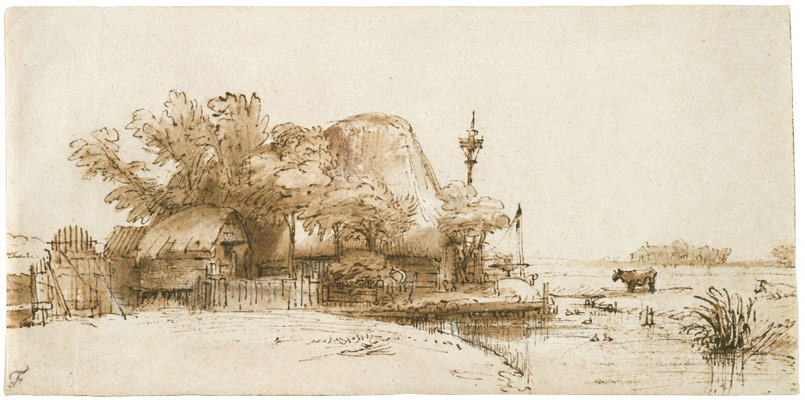William W. Robinson, the Harvard Art Museums’ Maida and George Abrams Curator of Drawings, emeritus, has been looking forward to this moment for a long time. After years of intensive preparatory work, research, and editing, Drawings from the Age of Bruegel, Rubens, and Rembrandt—a catalogue of 100 of the finest 16th- to 18th-century Dutch, Flemish, and Netherlandish drawings in the museums’ collection—has just been published. An exhibition of the same name opened on May 21, and over the summer a range of related events will take place, including a lecture by Dutch art expert Arthur Wheelock, an Art Study Center seminar, and gallery talks.
“It’s been a long haul,” Robinson said in an interview last month, “and it’s exciting. I can’t wait to see the book and the exhibition.”
A leading authority on northern European drawings, with a specialty in Rembrandt and his school, Robinson retired last year after 25 years as the museums’ drawings curator. Over the course of his lengthy Harvard career, he organized more than 10 major traveling drawings exhibitions. His close relationships with donors such as Maida and George Abrams and Melvin R. Seiden facilitated significant additions to the first-rate collection. In particular, the promised gift made by the Abramses in 1999—110 drawings from their comprehensive holdings of 17th-century Dutch works—elevated the collection. The gift, in fact, provided a good portion of the rich subject matter that Robinson elucidates in both the new catalogue (with contributions by Susan Anderson, curatorial research associate for Dutch and Flemish drawings) and this summer’s exhibition.
Robinson carefully selected the exhibition’s 40 drawings for the way that they highlight salient themes in the art history of the Netherlands during the 16th and 17th centuries.
“We often say drawings are where you see an artist’s first thoughts, or where the artist’s thoughts become actualized for the first time,” Robinson said. Studying drawings provides “this magical feeling that you’ve come closer to Rembrandt or Rubens—closer than when you encounter their more finished works.”
Notable works in the exhibition include two landscapes by Rembrandt that testify to the artist’s masterful range: the suggestive and sketchy Landscape with a Farmstead (“Winter Landscape”) and the more finished and strikingly detailed A Farm on the Amsteldijk(?). Rubens’s A Study for Christ for “The Elevation of the Cross” and Saint Gregory of Nazianzus Subduing Heresy, preparatory drawings for important works the artist painted in Antwerp churches, shine light on both his process and his skill as a draftsman.
Bruegel’s Wooded Landscape with a Distant View toward the Sea is noteworthy for being one of the artist’s rare dated (1554) drawings on blue paper, and the only one to include highlights in white transparent watercolor. In this work, conservators discovered an extensive underdrawing in black chalk—“almost fussy, it’s so detailed,” Robinson said.
Though curators had long been aware of this work’s underdrawing, a number of other drawings were found to contain similar features. Penley Knipe, the Philip and Lynn Straus Conservator of Works of Art on Paper, used high magnification as well as infrared and ultraviolet light to study each of the 100 drawings in the catalogue; in some cases, hidden materials, inscriptions, and other previously unknown features were discovered.
This summer’s exhibition and related events, as well as the new catalogue, will undoubtedly bring new attention to one of the museums’ most significant collections; but the museums’ work in these areas is far from finished. Eventually, Robinson’s research on the 100 drawings will be made available in an online database, and new research on the rest of the Dutch and Flemish collection will be added. In addition, a catalogue featuring French drawings from the 16th to 18th centuries is nearing completion.
“This is a milestone for me, but it isn’t the end of the story,” Robinson said.






